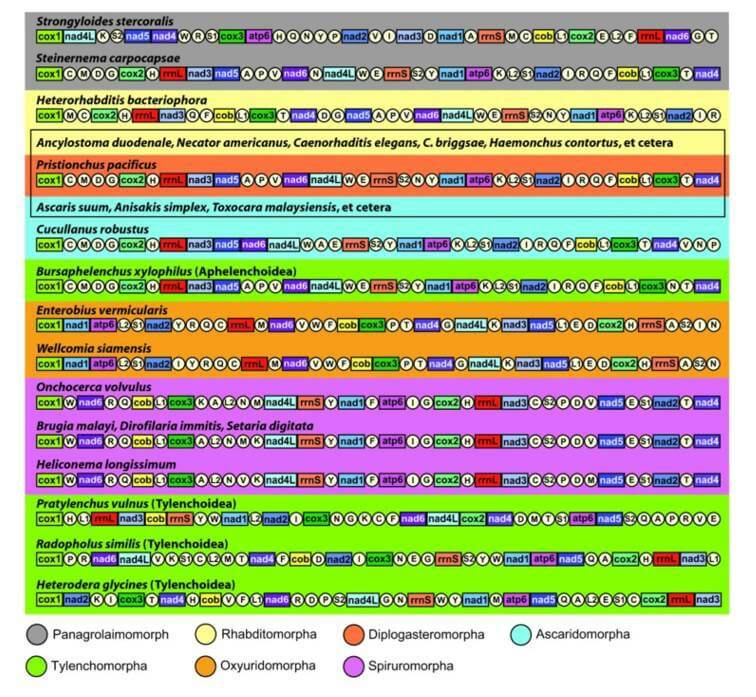Comparative Analysis of Plant Nematode Genomes
Nematodes are the most common, abundant, and ecologically diverse animal groups. Free-living species inhabit almost all environments and are extremely abundant in soil and aquatic sediments in freshwater and oceans. Plant nematodes attack various cash crops, mainly causing damage to the root tissue, which affects the physiological function of host plants, especially water transport. Recent transcriptome and genome projects have dramatically expanded the biological data available across plant nematodes.
Lifeasible provides a comparative analysis of plant nematode genomes, including genome sequences and mitochondrial genome sequences. Our platform is equipped with state-of-the-art facilities and highly experienced staff to assist in areas of autophagy of endoplasmic reticulum quality control. We guarantee credible results for our customers all over the world.
Comparative Analysis of Genome Sequences
- Rapid gene discovery and cross-species comparisons in plant nematodes have been enabled by generating and analyzing ESTs, single-pass sequence read from randomly selected cDNA clones.
- Type of genome projects are diverse, such as full genome sequence complete, whole genome draft complete, whole genome draft planned, whole genome draft in progress, whole genome shotgun complete, and so on. Lifeasible provides a comparative analysis of genome sequences, focusing on genome sizes, chromosome numbers, intra-chromosomal rearrangement, etc.
- We also help our customers with the origins and evidence for horizontal gene transfer into plant nematode genomes, using a phylogenetic incongruency filter and all bacterial sequences available from GenBank.
Comparative Analysis of Mitochondrial Genome Sequences
- To date, a few complete mitochondrial (mt) genomes have been reported for plant nematodes. Comparative analysis of nematode mt genome information, including nucleotide and amino acid sequences, and gene arrangement, appears useful for resolving relationships at different divergence levels.
 Fig.1 Linear representation of mitochondrial gene arrangement in plant nematodes. (Ma X et al., 2020)
Fig.1 Linear representation of mitochondrial gene arrangement in plant nematodes. (Ma X et al., 2020)
- Lifeasible provides a comparative analysis of mitochondrial genome sequences from many aspects, such as gene contents and organization, protein-coding genes (PCGs), transfer RNA and ribosomal RNA genes, non-coding regions, etc.
- We help our clients with gene annotation, including protein-coding genes, the start and termination codons, ribosomal RNA (rRNA), tRNA, and so on. Additionally, we also help our clients with the phylogenetic relationships of plant nematodes through access to mitochondrial phylogeny among various groups.
Workflows of Genomic Comparative Analysis
- DNA extraction.
- Primer design and PCR amplification.
- Sequencing and splicing.
- Through data analysis, to obtain the information of gene composition, arrangement, variation locus distribution and evolutionary relationship, and so on.
Lifeasible provides fast turnaround and high-quality services at competitive prices for customers worldwide. Our advanced technical platforms can help our clients solve the problems they may encounter in research based on years of experience. If you are interested in our services or have any questions, please feel free to contact us or make an online inquiry.
Reference
- Ma X, et al. (2020). "The complete mitochondrial genome of the Columbia lance nematode, Hoplolaimus columbus, a major agricultural pathogen in North America." Parasit Vectors. 13 (1), 321.
For research or industrial raw materials, not for personal medical use!
 Fig.1 Linear representation of mitochondrial gene arrangement in plant nematodes. (Ma X et al., 2020)
Fig.1 Linear representation of mitochondrial gene arrangement in plant nematodes. (Ma X et al., 2020)